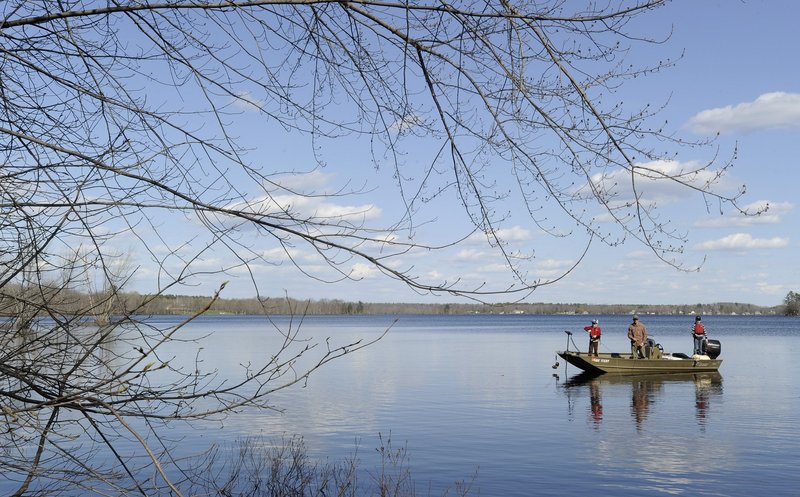In the past 25 years, most of my fly-fishing occurs in riverine habitat, often timed to coincide with hatches that start feeding sprees.
This passion for rivers, streams and brooks strikes me as odd, too. In my 20s, Maine brook trout ponds owned me after an Ivy League biology professor taught me the finer points of bottom-dredging and covering rises in still water. (I’ve written about bottom-dredging here before.)
Thanks to the professor, my knowledge of still-water brookie tactics led me to selling lots of how-to still-water articles to national magazines.
In a state like Maine with so many trout ponds, serious fly fishers learn pond-brookie tactics. In the early 20th century, Mainers practically invented the basics of still-water fly rodding, certainly a debatable claim — but debatable nonetheless.
Fly-fishing with dry flies in ponds begins as it does in flowing water. After matching an imitation to a terrestrial or aquatic insect in size, color scheme and silhouette, fly rodders cover rises during hatches.
A tip helps novices match the bug. Fly fishers catch and scrutinize the little critter that’s interesting trout and ask themselves five questions: What color is the abdomen? Thorax? Legs? Wings? Tails?
Looking at a natural insect piecemeal helps the observer truly note all the colors. The trick is to match an artificial in all five hues, but getting four or even three out of the five often fools trout. In my humble opinion, though, it’s crucial to get the abdomen and thorax hues right. Proper wing color is the second most important match.
Another tip helps, too. Hold the imitation beside the natural in the palm of the hand and see if the two are exactly the same size.
And yet another tip: Closely look at the natural insect’s silhouette. Are the wings up or down? Does the abdomen taper to a smaller size at the tail, typical of mayflies? Or is the abdomen a larger diameter at the tail, typical of caddises? Speaking of tails, does the insect have a tail like a mayfly or is it tail-less like a caddis? Is the insect’s body oddly shaped — say like an ant? The imitation must make a similar silhouette to the natural bug floating on the meniscus, which leads to success.
When covering rises, experienced fly casters leave 35 feet of fly line floating on the water and another 30 feet coiled on the canoe or boat floor or in a stripping basket. That last length depends on casting skills.
When a trout rises within casting distance, fly rodders lift the fly line from the water, cast as quickly as possible and drop the fly on the rise ring, beside it or ahead of it.
If the trout rises once, a good dry-fly caster lands the fly onto the rise ring within two or three seconds before the fish swims off.
Exceptions exist to the quick cast, though. Trout may stay in the vicinity a minute or more.
Feeding trout may swim in one direction and dimple the surface every few feet or yards, so fly rodders determine the course and cast six feet or so ahead of the last dimple to intercept the fish’s direction.
With an emerger (or nymph), fly rodders cast the fly beside the rise and work it back past the trout, imitating the natural bug’s movement.
Fly fishermen determine how an insect behaves below the surface in one of two ways: careful observation or research in fly-fishing entomology books, which often explain the behavior of certain species before hatching.
Many aquatic insects sit motionless on the water, so we often want a fly to perch on still water (or to dead-drift in flowing water) because that’s what many insects do.
However, some insect species twitch, move around or vibrate, so we must match this trait with our imitations. Duplicating this movement with a dry fly leads to energetic strikes.
A favorite Maine hatch occurs from late June through July, depending on latitude, altitude and weather. Fly rodders call it the “Hex” or “green drake” hatch, and the dun twitches and/or scoots a little on the surface.
Also, a Hex emerging from the nymph shuck sometimes vibrates, sending out the tiniest of waves that resemble pictures of sound waves. Imitating this pulsation takes practice. During hatches of bugs that move on the surface, that little twitch, pull or vibration of the fly can mean the difference between fast action or none, particularly when caddis flies are emerging.
Yes, for the next five weeks in the northern half of Maine, hatches make trout fishing in ponds and lakes get as good as fly-fishing ever does in this state. Even the bottom of the state has semi-remote trout ponds that offer grand sport when rise rings telegraph the presence of a hungry trout.
Ken Allen of Belgrade Lakes is a writer, editor and photographer. He can be contacted at:
KAllyn800@yahoo.com
Copy the Story Link
Send questions/comments to the editors.



Success. Please wait for the page to reload. If the page does not reload within 5 seconds, please refresh the page.
Enter your email and password to access comments.
Hi, to comment on stories you must . This profile is in addition to your subscription and website login.
Already have a commenting profile? .
Invalid username/password.
Please check your email to confirm and complete your registration.
Only subscribers are eligible to post comments. Please subscribe or login first for digital access. Here’s why.
Use the form below to reset your password. When you've submitted your account email, we will send an email with a reset code.